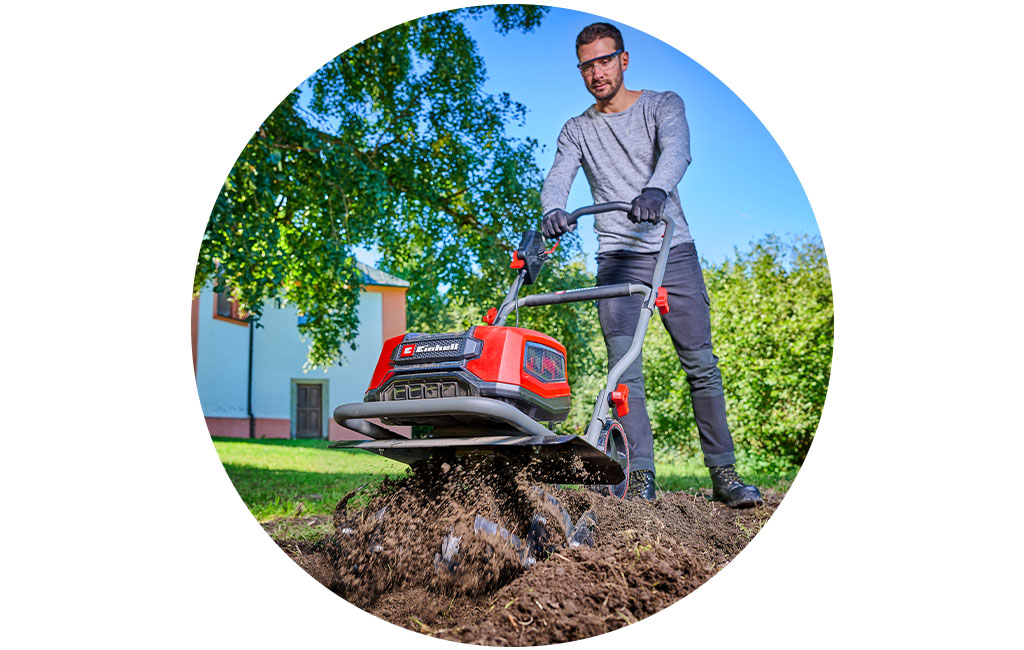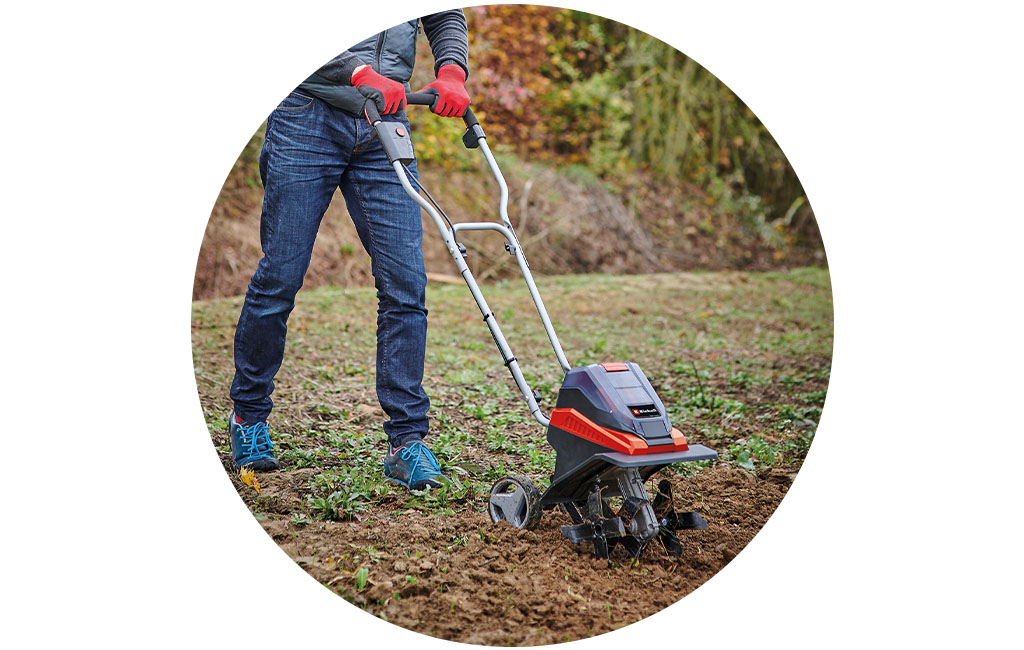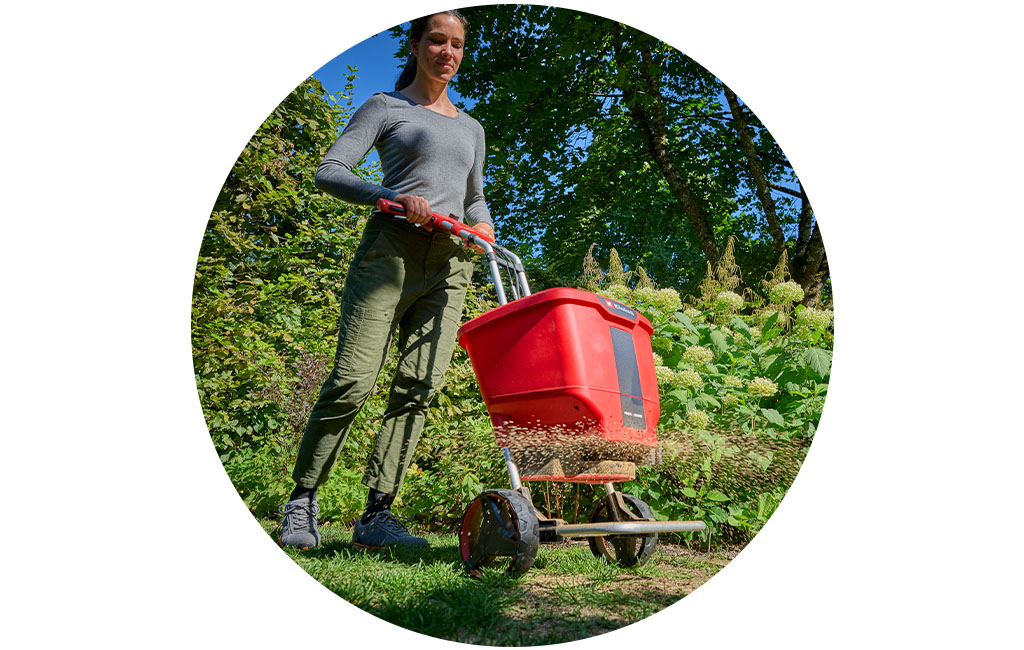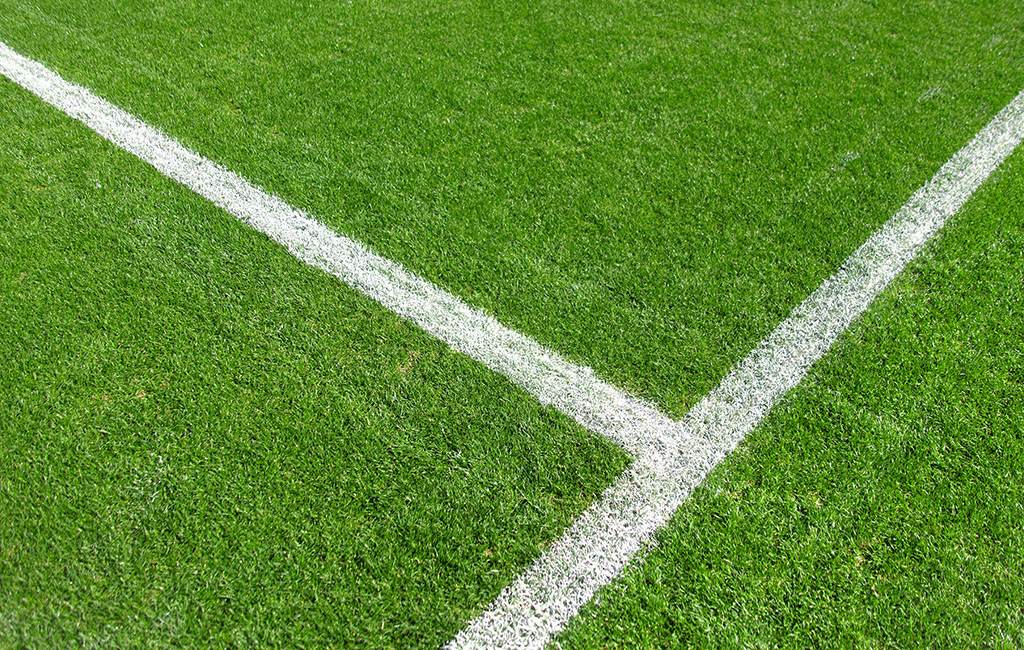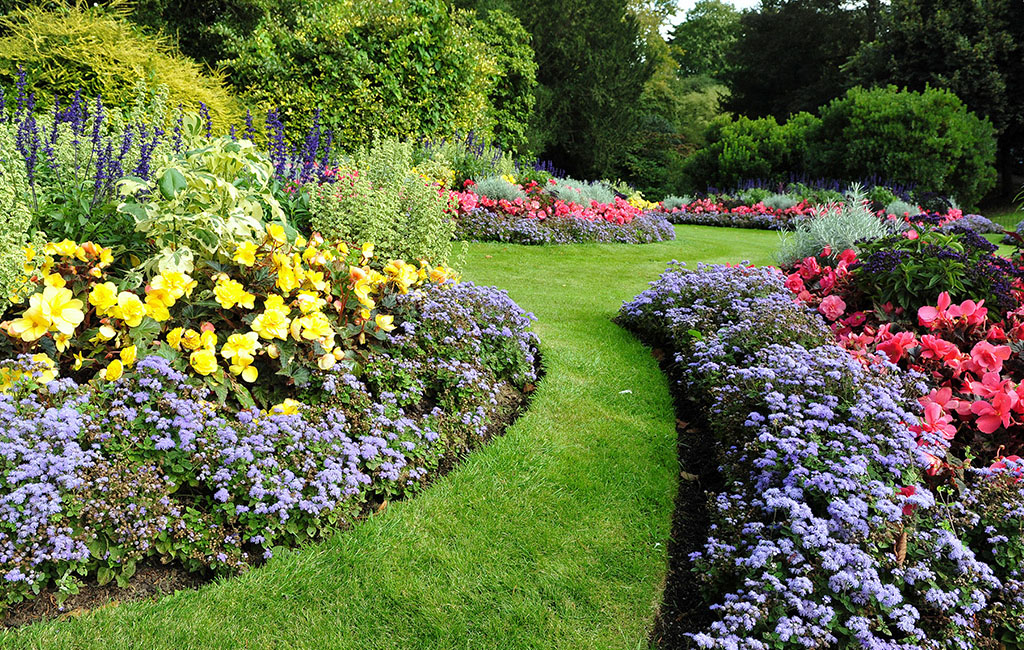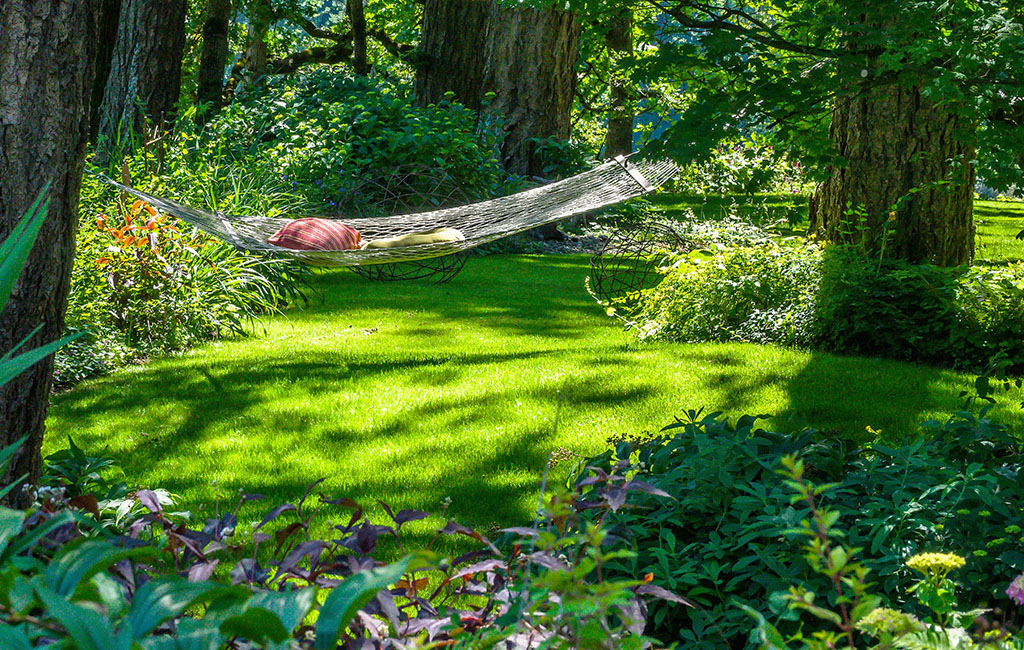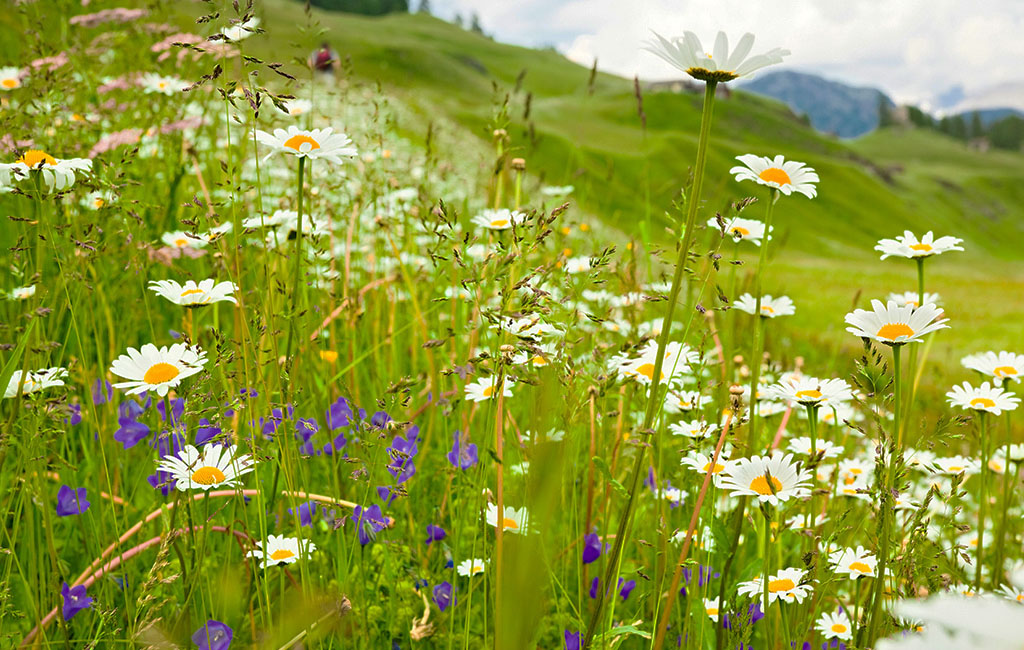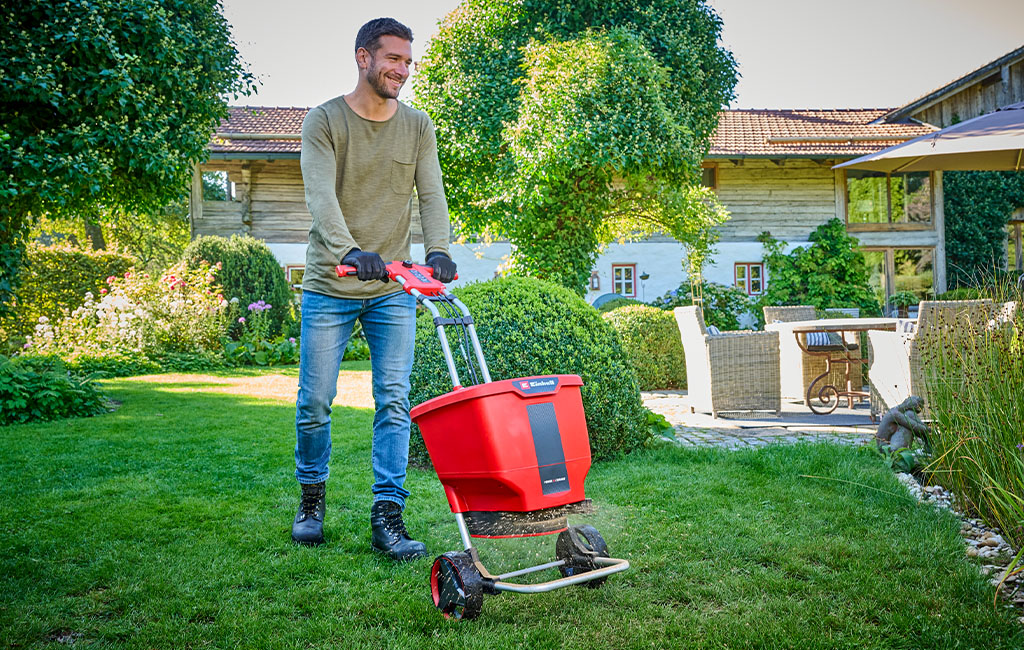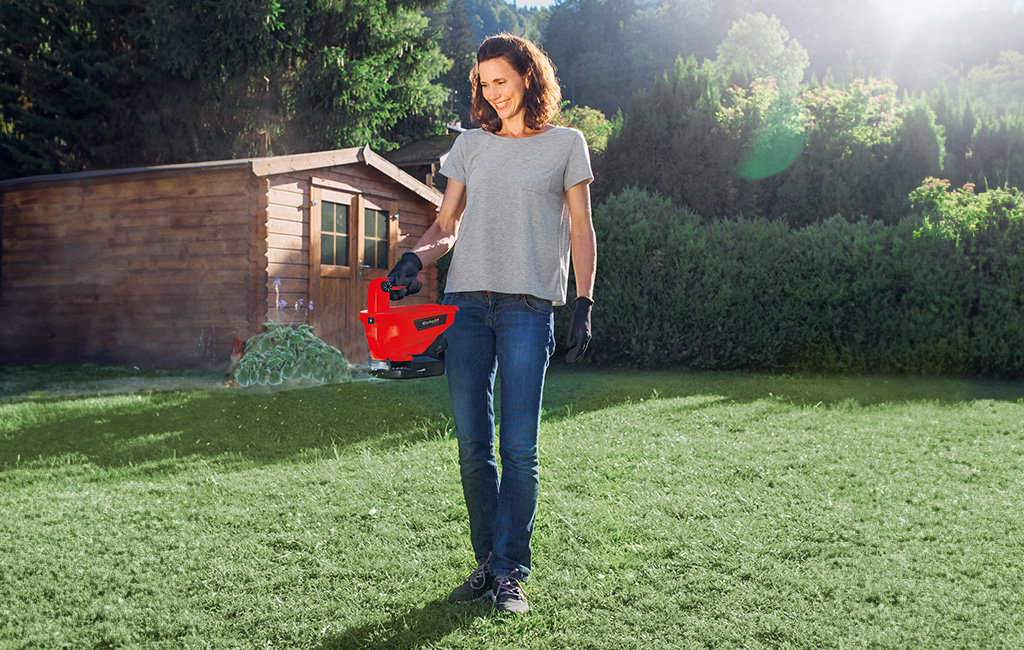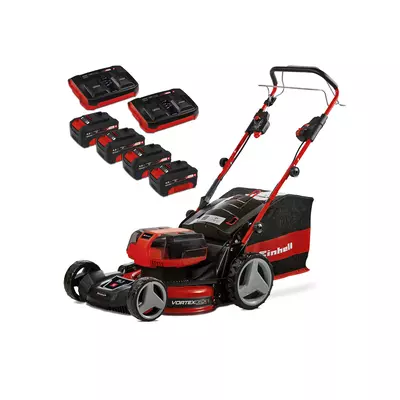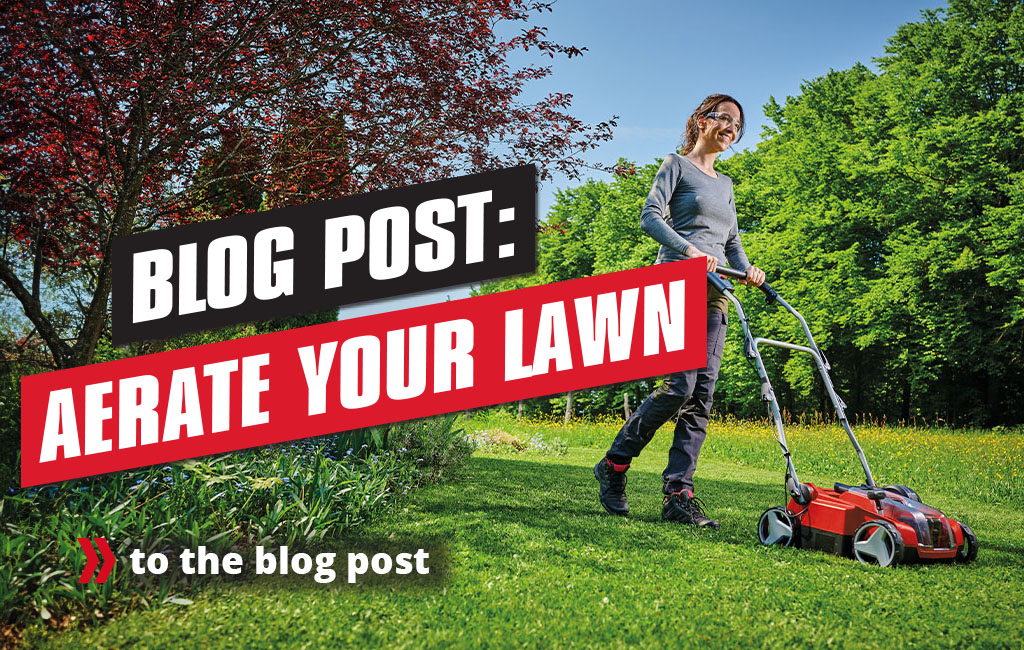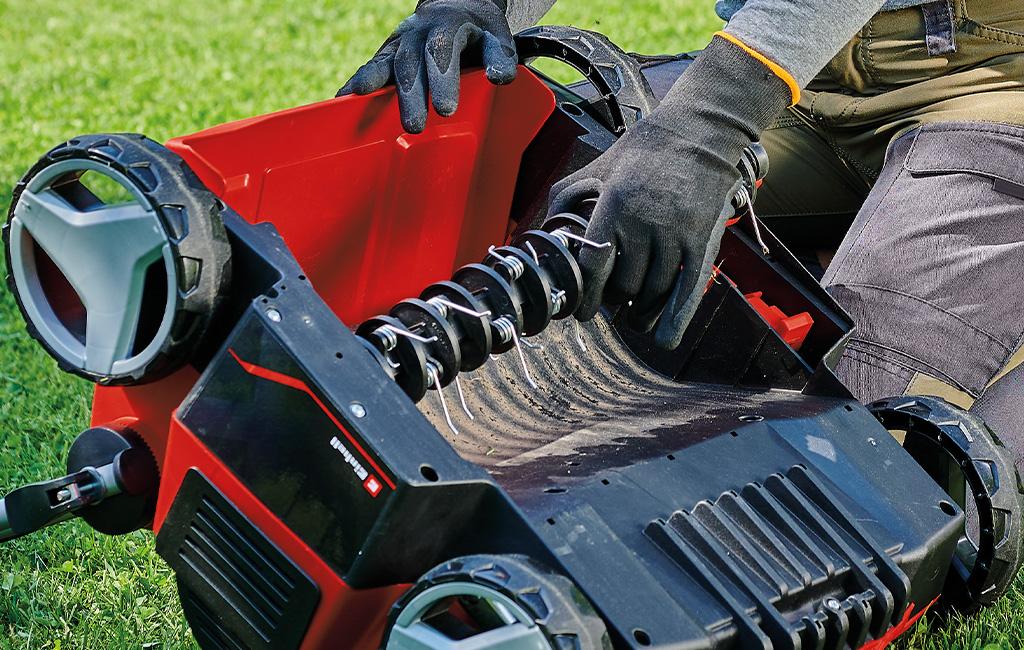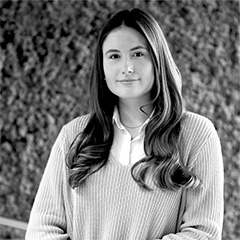Tips to lay a lawn in just a few steps
No sooner than the spring sun has driven out the wintery grey do its rays bring the green grass back to life and you'll start to hear the first mowers in the neighbourhood buzz into action. But before you can mow the grass in your garden, you first need to sow it. While the trend nowadays – at least in smaller areas – might be to roll-out turf, large areas are usually still laid in the conventional way. This does involve a little work, but with the right tools, this can be an enjoyable experience.
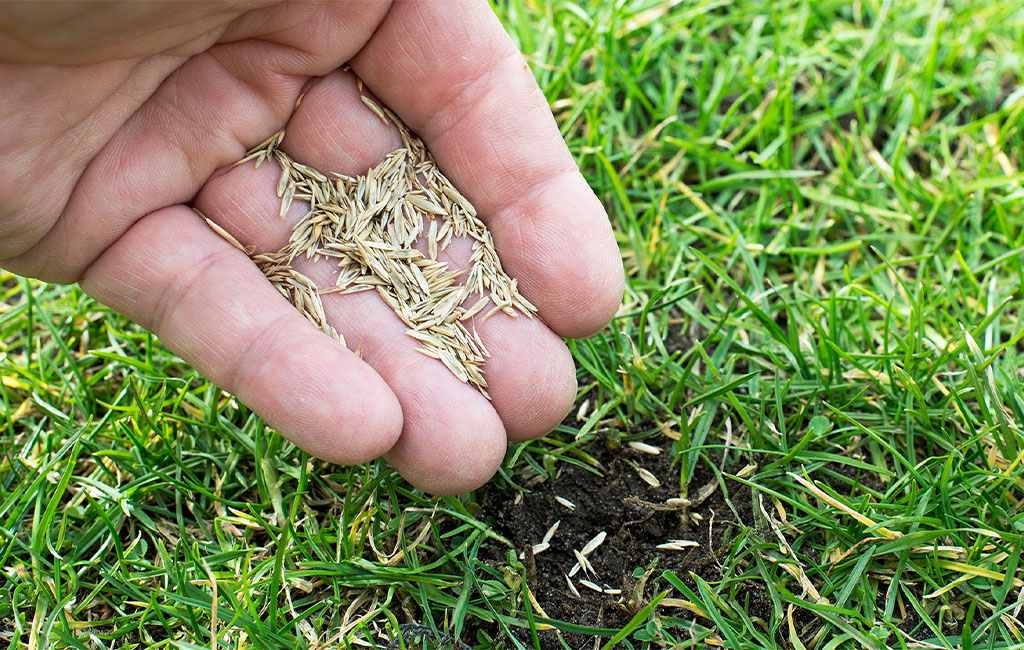
Useful tools for laying the new lawn
When it comes to the project duration, you should allow several weeks. Laying a new lawn involves four phases:
- Soil preparation
- Several weeks' waiting time for the soil to settle
- Sowing the seeds
- Lawn maintenance (fertilizing, mowing, scarifying, etc.)
Having the right tools is already half the battle. For sowing the new lawn, the following Einhell tools could be helpful, supporting you diligently in your project:
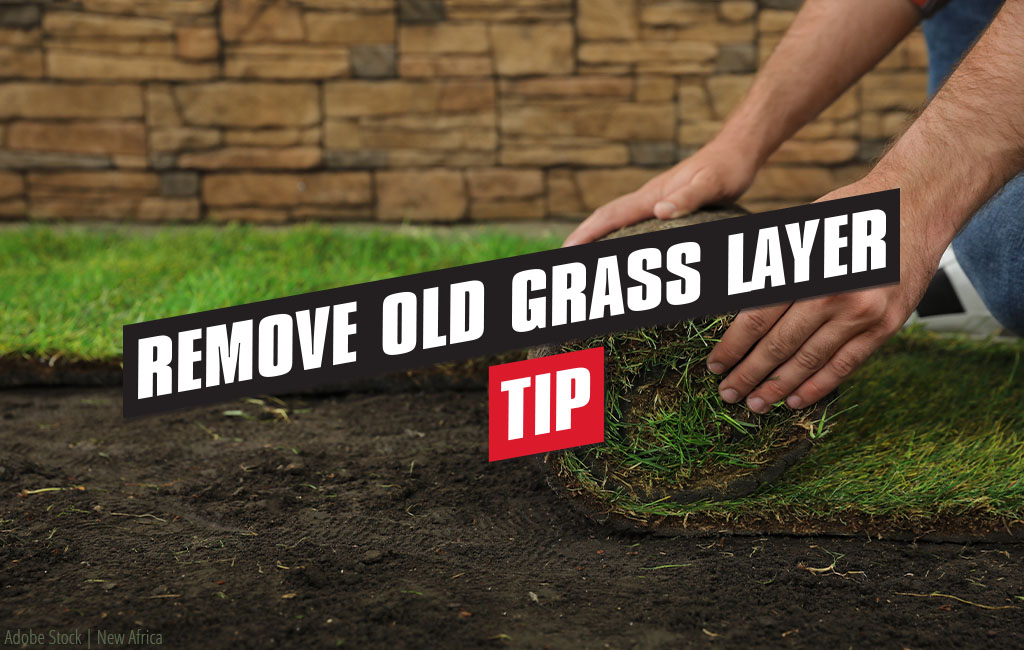
TIP
Machines such as a lawn stripper or a lawn sod cutter can also be helpful if the existing grass layer of the old lawn needs to be removed. A soil sieve could also come in handy to separate compost soil, for example, from stones or larger pieces.
What time of year should you lay the lawn?
When you can sow your lawn mainly depends on the soil temperature. Most grasses need a soil temperature of at least 8 °C to be able to germinate and optimum air temperatures between 14 °C and 25 °C. In addition, they absolutely need sufficient moisture in the soil. You are most likely to find these conditions in late summer or early autumn, which is why this season is best for sowing your lawn. In September there is still a lot of heat stored in the soil and rainfall is more likely due to the weather conditions. But make sure not to lay the lawn too late in the autumn, as with some varieties it may take three to four weeks for the first blades of grass to appear. The young stalks are usually as frost-resistant as the older grass. So they'll be fine when winter comes.
And another reason that autumn is a good time for new planting is that if soil preparation is carried out in the spring, some weeds grow unimpeded on the surface during the summer, so these can be pulled out by hand directly. This means that they will not settle there permanently. This approach is labour intensive but highly effective and spares the soil.
If you do not want to wait until autumn, you can sow the grass in spring. However, the garden soil temperatures needed for germination will only be reached in April. Soil temperatures are usually best from mid-April to early May, but make sure that there is enough moisture in the soil. High temperatures in early June can easily harm the young lawn and ruin all your hard work.
- The ideal day for sowing is dry, and the weather forecast predicts rainfall. Also, the topsoil should be dried out.

Which type of grass is suitable for me?
The beauty of a lawn lies in the eye of the beholder. This means that there are many different varieties available. Some people like a very fine uniform English lawn in which no herbs or flowers should bloom. Those with children should make sure that the grass is rugged and can withstand children trampling it. And others still want to see many herbs and wildflowers growing together with the grass on their lawn. And clover and daisies can even appeal to them. All these variants and many more are already ready to buy in different lawn mixes. So you first need to think about your lawns location and how you are going to use it. And that will determine which variety is right for you.
Properly prepare the soil
The soil must be well prepared before sowing. The first step is to remove any weeds and dig over the whole area. If there is already a layer of turf on the surface that is no longer to be used, a lawn stripper or lawn sod cutter should be used here. Next, the area needs to be dug over. The easiest way to do this is with a tiller or, for the ambitious among you, with a spade.
The humus-rich topsoil is the nutrient-rich soil layer in the garden. Generally, it reaches down to a depth of 20 cm. This means if you dig down too deep, you'll be boosting nutrient-poor soil. This means you can confidently save your energy. If the top layer is thinner than 20 cm, you should pack the lawn with humus or topsoil so that the grass has enough nutrient-rich soil to root through.
- When digging, you should remove weeds, root remains and stones. Depending on the type of soil you can improve it. For example, you could try the following additions:
• River or quartz sand from (heavy) clay soil
• Bark humus from (light) sand soil
• Special grass soil for normal soils - At this point, it is also a good idea to look at the pH of the soil to see if you should lime it. If the pH is too low, this means the soil is to acidic, which inhibits the growth of the plants. In sandy soils, which have low buffering power, the pH should not fall below 5.5, in clay soils not lower than 6.5. For moderate soils, the threshold is value is 6.0.
- After digging, loosening up and improving, the soil should rest for at least two weeks, preferably more, before the seeds are applied. This allows the loosened soil to settle. After this waiting time, you may have to even out the surface with a rake and crush clods that are larger than a centimetre. You may also want to remove any weeds that have already grown in this process as well as any stones from the surface.
- Directly before sowing, you should level the soil again with a roller and even out any new bumps. This is where the Einhell Garden Roller GC-GR 57 is helpful. If you don't roll the top surface, the new lawn will be uneven. What's more, weed seeds flying around will take hold on rough ground.
Sowing: Ideally, you should use a spreader for this
Once the future lawn area has been made flat using the lawn roller, you can actually start sowing. You can distribute the seeds as evenly as possible, either by hand or using a spreader. We recommend a spreader or a Universal Spreader, such as our Einhell Cordless Multi Purpose Spreader GE-SR 18/22 Li or the Einhell Universal Spreader GE-US 18 Li for this because it distributes the grass seeds more evenly. What's more, a spreader can also be used later to spread fertiliser, so it is definitely worth the investment. Now, you should spread about 20 – 25 grams of lawn seed per square metre. This amount can vary depending on the type of grass you are using, so read the manufacturer's instructions provided on the packaging before you start. Around the border areas, you should increase the amount of seeds you sow to get a solid lawn edge.
Then carefully rake the seeds with a rake until covered with a thin layer of soil. This means that the seeds will not be carried away by the wind or by hungry birds.
So that the soil does not settle too much and have bumps after sowing, you should level it again. To minimise the surface area that weeds can attach to, and to ensure that the lawn seeds are firmly planted in the soil, it is best to use the roller over the entire area again.
Important after snowing: Lawn care
The newly laid lawn requires a lot of water to be able to germinate and grow. In this phase in particular it is important to keep the soil continuously moist, so you will need to water it regularly. Ideally, you should use a lawn sprinkler to ensure that the soil receives around 10 litres of water per square metre per day. But you won't need to water it on rainy days, of course. These high water quantities are also required for turf lawns.
The Einhell Automatic Cordless Garden Pump AQUINNA 36/38 F LED AUTOMATIC assists you with irrigation. It draws water from depths of up to 6 meters and pumps it at a maximum of 3.7 bar to the lawn sprinkler or garden hose. Our Einhell Cordless Hose Reel GE-HR 18/30 Li also helps in keeping the soil moist. The advantage of our cordless hose reel: it can also be used mobile in combination with a garden pump, should you have a larger garden.
You should be able to see the first blades of grass within the first 10 days. The young lawn seedlings are extremely delicate, so it's important that you don't walk on the area during this time. It can take up to three weeks before all the seed has sprouted. Once the area is entirely green, you can stop watering it. This forces the plants to form a deep root system to extract moisture from deeper parts of the soil. A lawn with deep roots also needs less additional watering, even in the height of summer.
Caution with first mowing
Once the grass has reached a length of 8 to 10 cm, it's time to catch up with the neighbours and put the lawn mower to work. Pay attention to the moisture of the young grass cover. It should be a bit more stable and stronger before the first mowing. If it hasn't got there yet, the young grass may be torn out by the lawn mower. If you notice this happening, stop mowing and wait another few days. You shouldn't mow grass when it's too wet, as wet grass blades can be damaged in the process. It's better to wait until the green lawn area has dried out.
When mowing for the first time, cut the grass to a height of 5 cm. This way, less moisture evaporates from the soil and the blade can absorb enough light to form a strong root system. The next time, you can go a bit deeper: Ornamental lawns should not be higher than 4 to 6 cm and then cut back to 2 to 3 cm. Hard wearing, recreational and sports turfs may keep a height of 3 to 4 cm. In shady areas, the cut height should not be less than 5 cm.
| Turf type | min. cutting height (cm) | max. height (cm) |
|---|---|---|
| Ornamental lawns | 2 - 3 | 4 - 6 |
| Recreational lawns | 3 | 4 |
| Sports fields | 3 | 4 |
| Shaded lawns | 5 | > 5 |
Product was added to the comparison list.
Product was removed from the comparison list.
Open comparison listThe first lawn fertilizer: Don't overdo it!
The young grass seed is applied to good topsoil so that it is well cared for. Later, it does the lawn good to be fertilised every now and then. However, this should be done with some caution, particularly with very young lawns. If you use too much fertiliser it can burn the young grass. Therefore, it is important not to fertilise too early or too much. If the grass clippings are not left as mulching material, you should regularly fertilise the lawn with a special lawn fertiliser. This is best done with a spreader, both in a vertical and horizontal direction. But don't fertilise freshly mown grass!
To keep your lawn nice and green, you don't just need nutrients, but also enough water and oxygen. Regularly remove the thatch layer of mosses and dead parts of plants, preferably once or twice a year. Use a scarifier and/or aerator for this purpose. We've explained the best approach in another blog post.
Summary: Challenge accepted!
As you can see, laying a lawn does take some work. With our professional gardening equipment and a little craftsmanship, you can easily master this challenge. If you follow our instructions step by step and then don't forget to regularly fertilise, mow and scarify your lawn, you will be able to enjoy it all year long.





